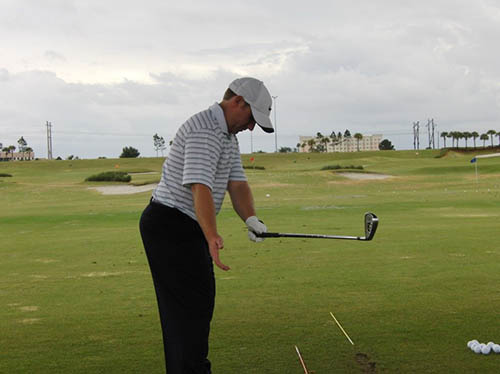Golf Backswing Drills: Parallel Perfect

A Legacy Post by Keiser University College of Golf Senior Faculty and Director of Research Dr. T. J. Tomasi (1940-2023)
In the early part of your backswing, the club is moving so slowly that it’s easy to misdirect it. After they start their swing, many players make a mistake in the first foot or two and then spend the rest of the swing trying to make compensations for their error.
Parallel Golf
The golf drill known as “parallel golf” is a fundamental exercise aimed at refining the consistency and accuracy of a golfer’s swing. In this drill, golfers focus on achieving parallel alignment between their club shaft and target line at key points in the swing, such as the backswing and follow-through. When the club shaft is parallel to the ground it should also be parallel to the target line. This is ideal on the backswing and the forward swing. By ensuring that the club shaft remains parallel to the target line at these critical stages, golfers can develop a more precise and repeatable swing path. This drill emphasizes proper body rotation and club positioning, encouraging a more efficient transfer of energy from the body to the clubhead. Through consistent practice of the parallel golf drill, golfers can refine their swing mechanics, improve ball striking, and ultimately enhance their overall performance on the course.
This a drill that is very helpful in developing a good takeaway: Using a mid-iron, take your normal address position, then remove your right hand from the club and extend it over your right foot. The object is to fill your right hand with the shaft during the takeaway, so the shaft is parallel with your toe line.
The student in the photo below demonstrates an incorrect takeaway by pushing the club offline so that his club shaft is not parallel to the shaft laid on his target line. This incorrect takeaway is much too outside and will lead to a bad position at the top of his swing, which will, in turn, lead to a bad position at impact — and that spells trouble. The ironic thing about this is that while his hands have moved only a foot or so from their address position, his swing is already compromised.
Golf Swing Takeaway
In the bottom photo, I’ve stepped in to assist my student with his takeaway. Note that the club shaft is parallel to his thighs when he delivers the shaft of his club into the empty palm of his trail hand. This will put the club in a perfect position in preparation for cocking his wrists and coiling his upper body. Once this is accomplished, all he has to do is reverse the process to hit the ball solidly and with force.
If you’re having trouble with your takeaway, do this drill at least twice for every one ball you hit. This is a very easy drill to do because once you’re set up, you can execute your two repetitions and then flow directly into your normal swing without having to reposition yourself to the ball.
Notice also the training shafts on the ground, which are arranged to give your eye the sense of where the parallel is. By laying down a shaft parallel with the target line and your foot line, and another one several feet away that is also parallel to your target line, your brain subconsciously learns the idea that it is good to have your club shaft parallel with these lines at the end of your takeaway.
There are several points during the golf swing at which the club shaft is parallel to the target line, and the end of the takeaway is the first one.

Only a few feet into his backswing, this golfer’s shaft is already far outside.

In the correct takeaway position, the club shaft is parallel to the shafts laid on the ground and my student’s foot line.
Learn more!
Want more tips? If you want to take your game to the next level, contact our team at Keiser University’s College of Golf & Sport Management today. With our dedication and experience, we can elevate your game to new heights together. Give us a call today at 888-355-4465.















I have ” discovered ” this ( I think) recently- so are you saying parallel on the backswing and also before the strike.
I am also trying to use it in pitching and chipping– for consistency of thought
Hi Barry,
It depends on the type of shot intended, but assuming a straight shot is in mind, as stated, “This is ideal on the backswing and the forward swing.” However, the “parallel” position on the backswing is inside the “parallel” position on the backswing. Send me your email address, and I will send you an example—a picture of Rory McIlroy at these two “parallel” swing areas.
John Callahan
Golf Program Instructor
Keiser University, College of Golf